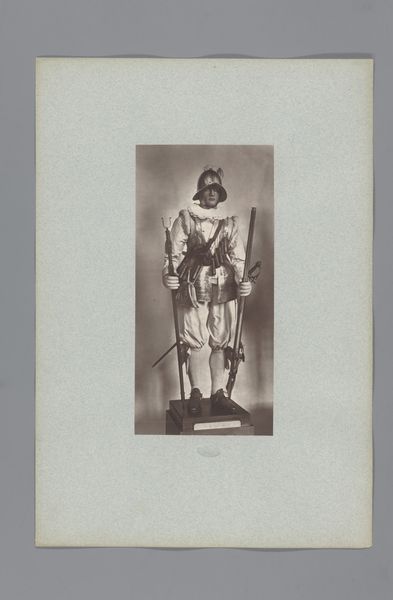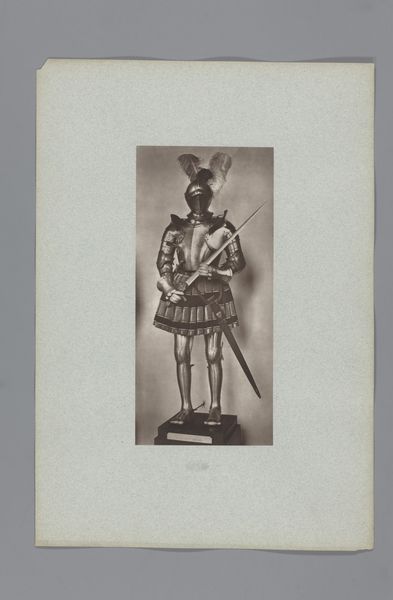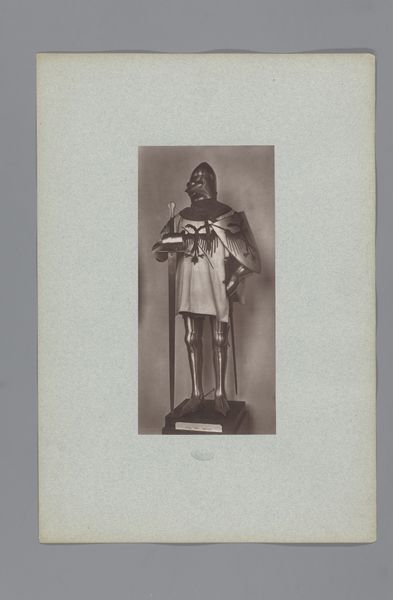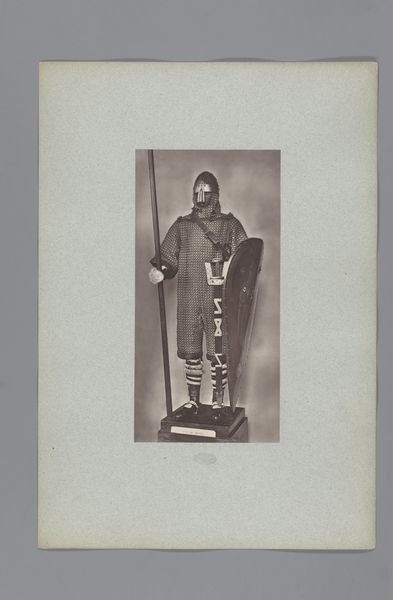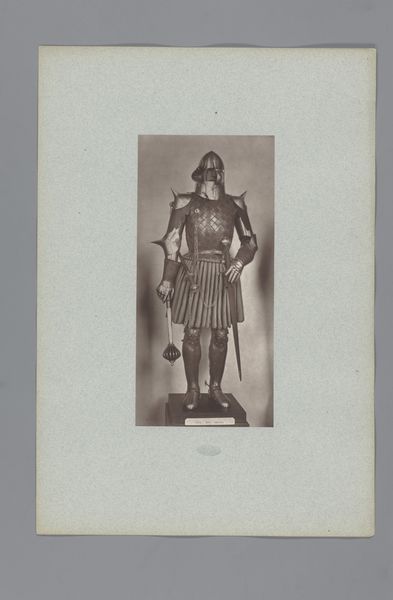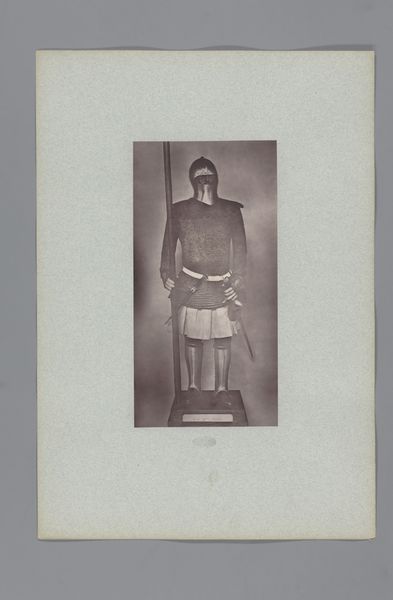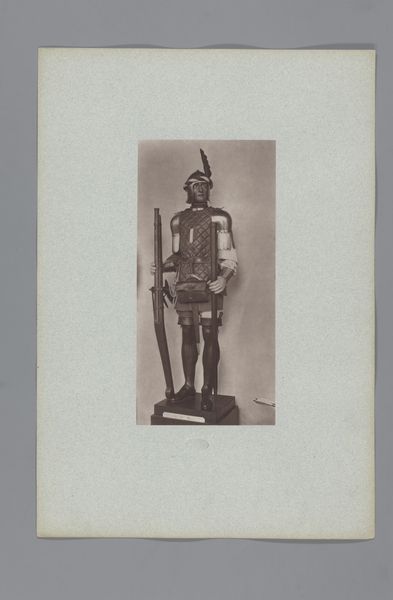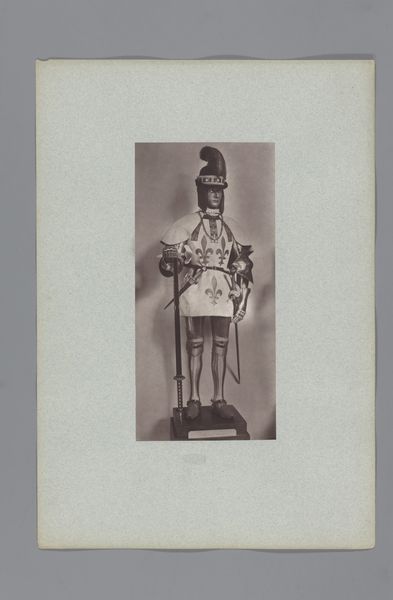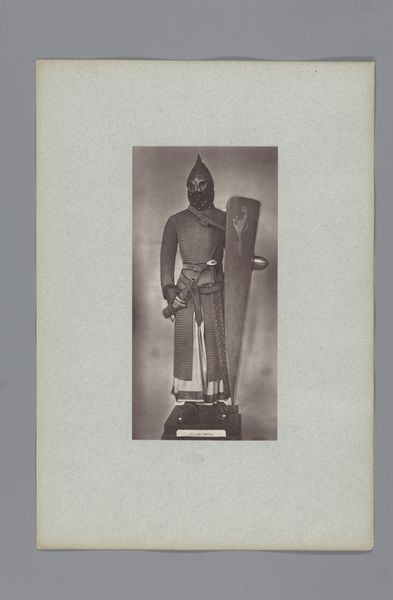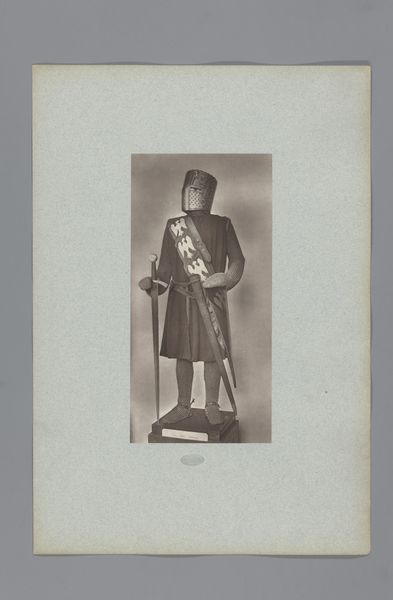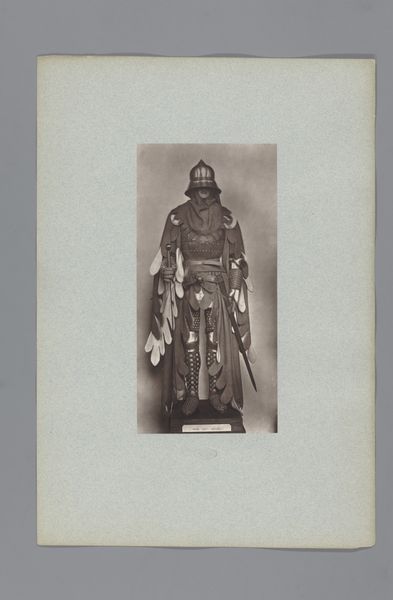
15de-eeuws harnas met zwaard en schild uit het leger van Karel VII van Frankrijk, uit de collectie van het Musée d'Artillerie in Parijs before 1882
0:00
0:00
anonymous
Rijksmuseum
Dimensions: height 275 mm, width 127 mm
Copyright: Rijks Museum: Open Domain
Curator: This gelatin-silver print, dating from before 1882 and taken by an anonymous photographer, depicts a 15th-century harness, sword, and shield believed to have been part of the army of Charles VII of France. It comes from the collection of the Musée d'Artillerie in Paris. Editor: Striking! There’s a real feeling of imposing stillness in the image. The dark metal against the neutral background really emphasizes the material qualities. It makes you consider the weight and purpose of the armour, even removed from the context of actual battle. Curator: Indeed. And in photographic reproduction, the weight of cultural memory is palpable. The figure in full battle-dress serves as a signifier of the medieval French military ethos and all of the ideals and history, constructed and otherwise, that entails. Editor: And considering the process of photography itself adds layers of interest. Turning steel into gradations of gray. I wonder what the photographer hoped to achieve by turning metal—the output of immense, sweaty, material labour—into something so flat, and reproducible. Curator: Possibly a way to create accessibility and promote France's historical legacy in a manner befitting the aesthetics of the period. Neoclassicism certainly favored order, precision and even idealized representation of power. Notice how the details of heraldry speak to the subject's valor. The entire composition and the choice to display, rather than to depict the armour as worn in action, speaks to the virtues of the nation. Editor: I'm interested in the almost absurd dichotomy between that idealized, academic aesthetic and the crude, material realities it elides. Think about the resources and manpower that made the original armour. And who actually wore it? What were their days and nights like? I can't help but feel a sense of deep removal, of lost connection to tangible past lives. Curator: Well, such objects offer a gateway nonetheless. The harness here can be interpreted as a symbol, albeit imperfect, of cultural endurance and martial identity. Perhaps more pointedly, they offer an indirect vision into the court of the “Victorious King” Charles VII, and even perhaps of Joan of Arc, herself a critical agent of this historical epoch. Editor: I’ll definitely leave thinking about what survives, and what’s lost, when objects from labor become stand-ins for history. Curator: A fine point, as the image echoes the sentiments of an era longing to preserve idealized forms of a bygone age.
Comments
No comments
Be the first to comment and join the conversation on the ultimate creative platform.
